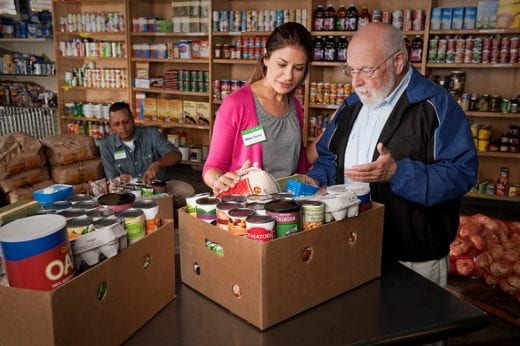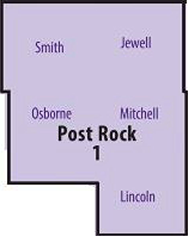 Donations of safe and healthy food help provide nourishment to hungry families and also reduce food waste. When organizing or contributing to a non-perishable food drive keep these tips in mind to enhance the health of your local community.
Donations of safe and healthy food help provide nourishment to hungry families and also reduce food waste. When organizing or contributing to a non-perishable food drive keep these tips in mind to enhance the health of your local community.
- Contact the food bank or pantry that you will donate to. They will know what their clients enjoy and what is needed at the time. Keep in mind that cash donations are also greatly appreciated and allow for discounted bulk purchases.
- Donate nutritious non-perishable food that fits into the MyPlate model. Healthy canned fruit and vegetable options include fruit packed in 100% juice and vegetables canned with no-salt added. Lean protein options include canned or dried beans, canned tuna or salmon, canned chicken, nuts and nut butters. Choose whole-grains when donating pasta, crackers, oats, rice (brown) and granola bars. Non-perishable dairy items include nonfat dry milk, evaporated milk, and shelf-stable (UHT) milk. If you are wondering if your local food bank or food pantry accepts fresh produce, first contact them to confirm this before donating.
- Don’t donate repackaged, expired or damaged food. Don’t donate food that is past its “best by, “use by” or “sell by” dates. Only donate food that is in its original packages with the label intact.
- Don’t donate home-canned foods. Because of the risk of botulism in improperly canned foods and the large variation in the level of safety of the methods used by home canners, food banks and food pantries should not accept home-canned items.
If you are organizing a food drive, it’s important to encourage people to donate safe and healthy foods and also specific foods that are needed, which will decrease food waste. Potential donors should be provided with a list of suggested nutritious and safe items that suit these needs. A printable list of nutritious and safe foods can be found here: http://hungerandhealth.feedingamerica.org/wp-content/uploads/legacy/mp/files/tool_and_resources/files/healthy-food-donation-list.pdf
By: Ashley Svaty

 Donations of safe and healthy food help provide nourishment to hungry families and also reduce food waste. When organizing or contributing to a non-perishable food drive keep these tips in mind to enhance the health of your local community.
Donations of safe and healthy food help provide nourishment to hungry families and also reduce food waste. When organizing or contributing to a non-perishable food drive keep these tips in mind to enhance the health of your local community.